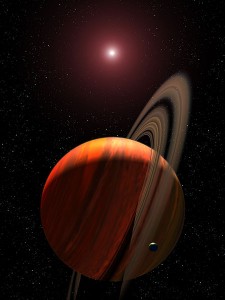SUNDAY, 1 JANUARY 2012
Analysis of the Kuiper Belt - a population of small celestial bodies, such as asteroids, located past Neptune - and the lunar crater record has provided astronomers with clues about the early evolution of the solar system. Such studies suggest that the giant planets and the smaller bodies scattered away from each other about 4.5 billion years ago, as a result of a dynamical instability.However, in this scenario, changes in Jupiter’s orbit would ultimately have disrupted the inner solar system, possibly causing the Earth to collide with Mars or Venus. An alternative hypothesis, therefore, is that during the dynamical instability Jupiter interacted strongly with Uranus or Neptune, scattering off one of them. This would mean that Jupiter’s effect on the terrestrial planets was much weaker, which would result in the stable orbits we see today.
Motivated by this hypothesis, Nesvorny ran thousands of simulations of the early solar system. Unexpectedly, he found that Jupiter’s interaction with another gas giant would have caused the other planet to be knocked out of the solar system. As a result, he was led to consider the possibility that the solar system initially consisted of five gas giants, as opposed to the four we now see.
The recent discovery of large numbers of free floating planets far away from any star supports this theory, suggesting that planet ejection is quite common. If true, this could mean that we owe the existence of the Earth as we know it to the loss of a gas giant back in the early days of the solar system.
Written by Javier Azpiroz-Korban

